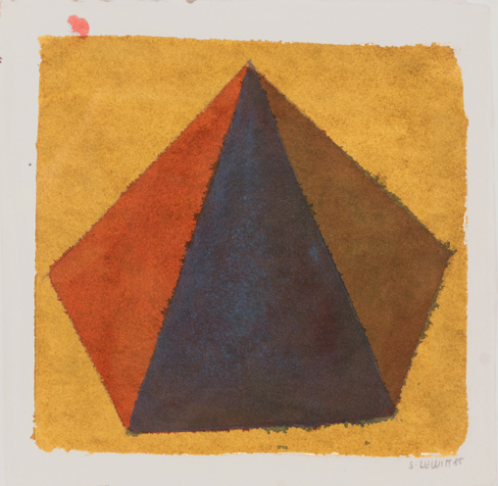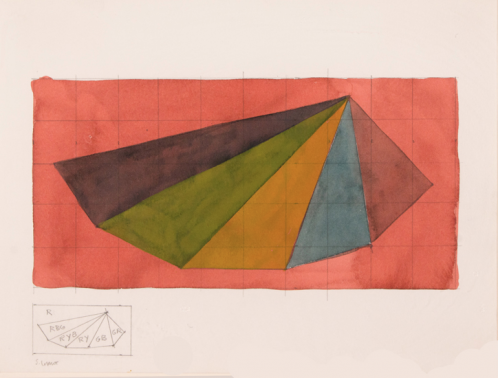Sol LeWitt
New York City
Sol LeWitt (1928 – 2007) is heralded as the pioneer of conceptual and minimal art. He became known for transforming primary colors and geometric shapes into formal compositions that developed a certain complexity through spatial organization. LeWitt was pivotal in the formation of the new radical aesthetic of the 1960’s and controversially had no concern for descriptive imagery or narrative. Rather, the artist focused on ideas, intuition, systems and structures, creating a lexicon of symbols and instructions that, especially in his later years, defied persistent logic and instead embraced emotion, humanity and the collaborative spirit. LeWitt’s methodology has often been compared to that of a composer, whose musical score is performed by others and thus allows for individual interpretation despite precise instruction.
The selection of works on paper that are currently presented in the exhibition Sol LeWitt: Works on Paper (1983 – 2007) by Waterhouse & Dodd reveal the variety of techniques LeWitt employed during the final decades of his life and marks the first time many of them will be viewed in public. Consisting of gouaches, woodcuts, etchings and engravings, the works on view range from formal geometric studies to exuberant compositions in vivid colors that convey a kind of lyrical expressionism.


June 22nd – August 3rd, 2012
104 Greene Street
New York, NY 10012
USA
Archive
- Dezember 2016 (1)
- Oktober 2016 (3)
- September 2016 (24)
- Juli 2016 (20)
- Juni 2016 (24)
- Mai 2016 (18)
- April 2016 (18)
- März 2016 (21)
- Februar 2016 (11)
- Januar 2016 (20)
- Dezember 2015 (20)
- November 2015 (37)
- Oktober 2015 (30)
- September 2015 (24)
- August 2015 (4)
- Juli 2015 (30)
- Juni 2015 (9)
- Mai 2015 (17)
- April 2015 (23)
- März 2015 (18)
- Januar 2015 (8)
- Dezember 2014 (1)
- November 2014 (3)
- Oktober 2014 (10)
- September 2014 (4)
- August 2014 (2)
- Juli 2014 (3)
- Juni 2014 (2)
- Mai 2014 (5)
- April 2014 (11)
- März 2014 (12)
- Februar 2014 (13)
- Januar 2014 (10)
- Dezember 2013 (5)
- November 2013 (13)
- Oktober 2013 (24)
- September 2013 (18)
- August 2013 (26)
- Juli 2013 (13)
- Juni 2013 (35)
- Mai 2013 (44)
- April 2013 (49)
- März 2013 (61)
- Februar 2013 (54)
- Januar 2013 (46)
- Dezember 2012 (50)
- November 2012 (58)
- Oktober 2012 (62)
- September 2012 (61)
- August 2012 (63)
- Juli 2012 (64)
- Juni 2012 (61)
- Mai 2012 (63)
- April 2012 (51)
- März 2012 (67)
- Februar 2012 (37)



